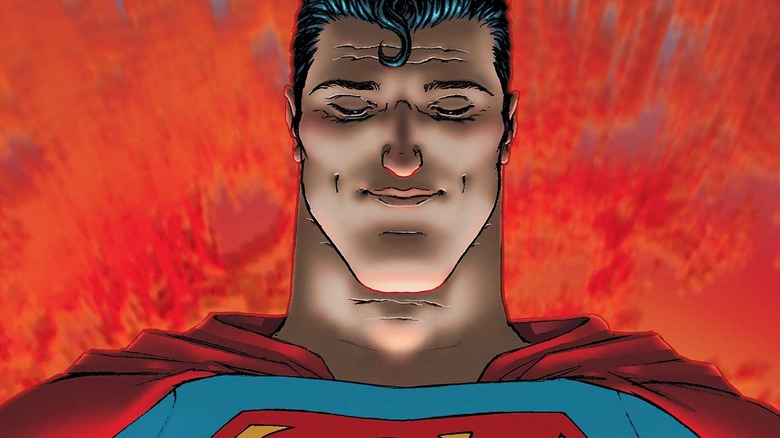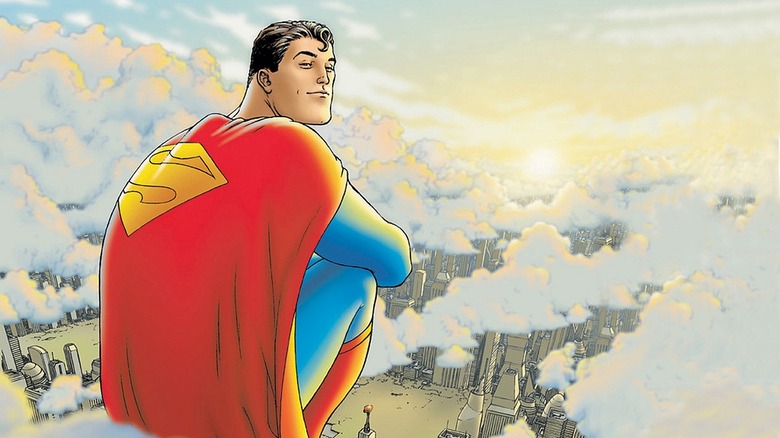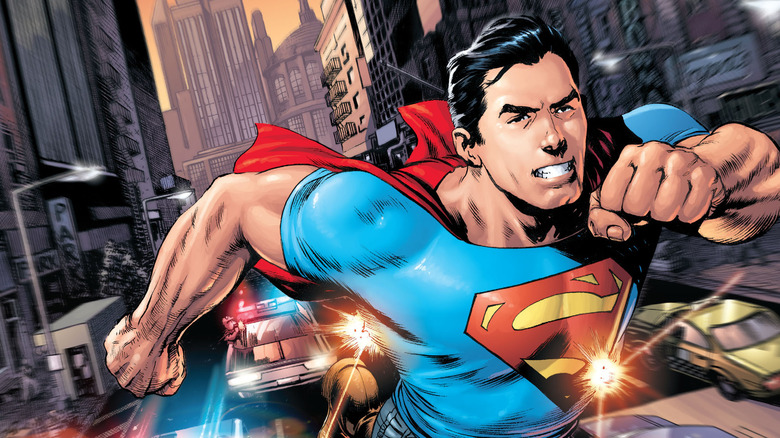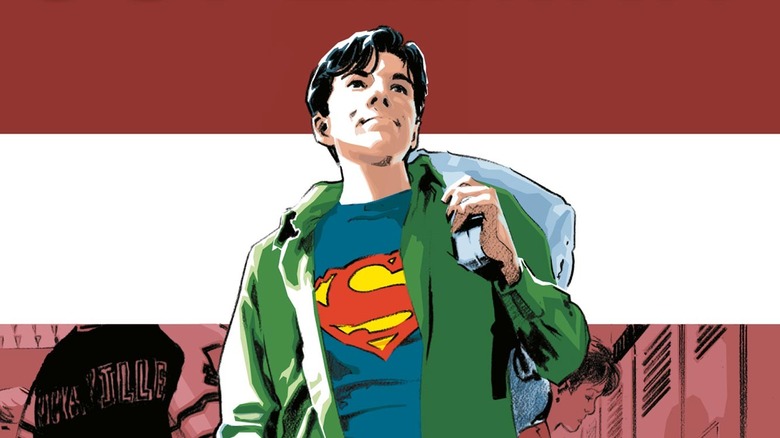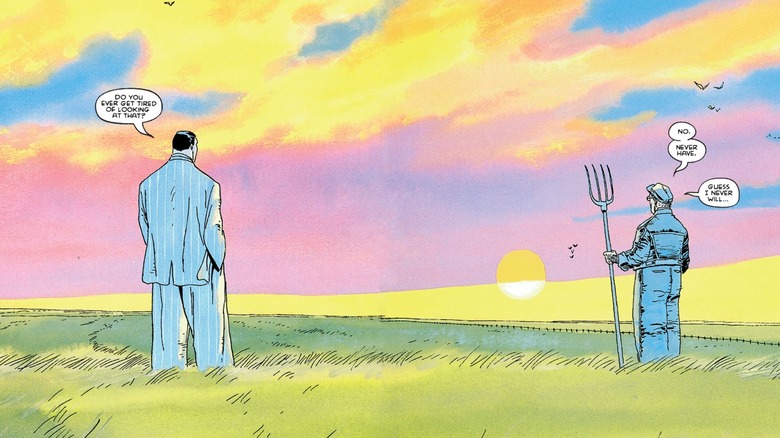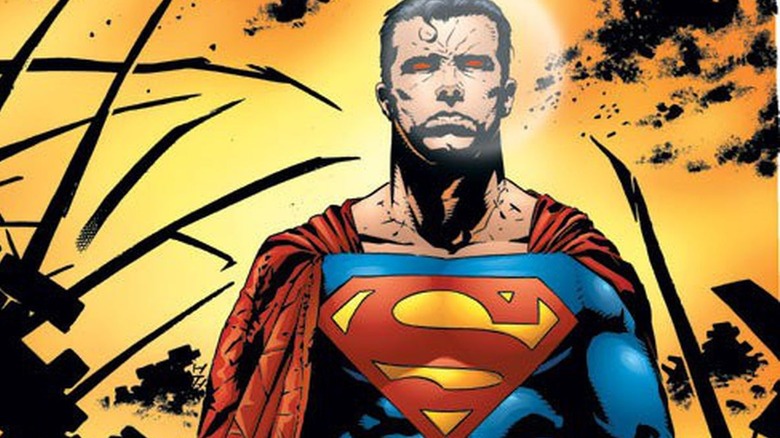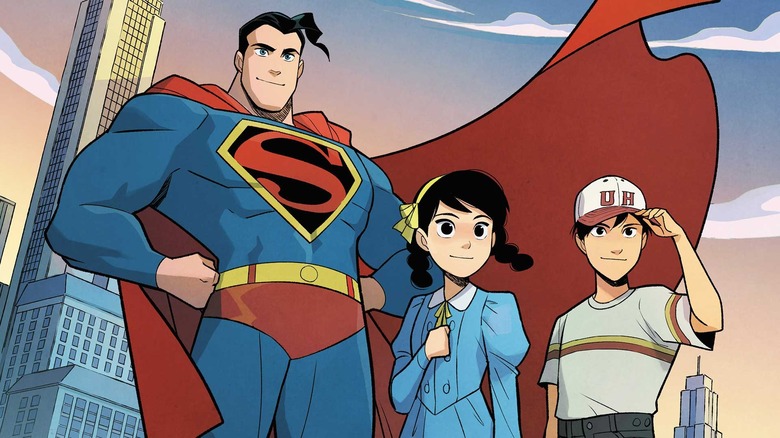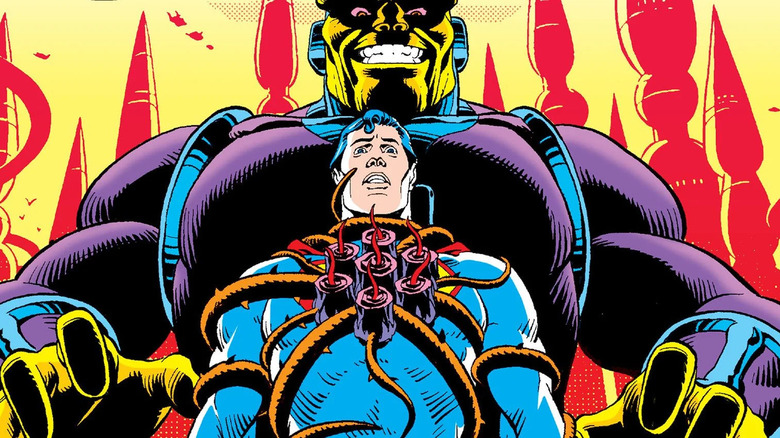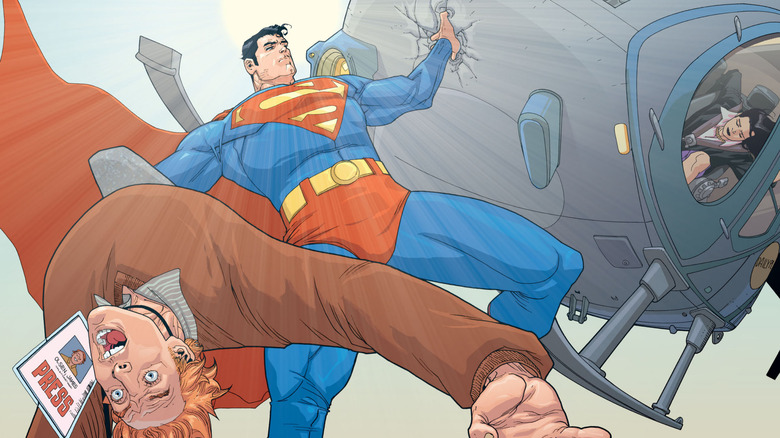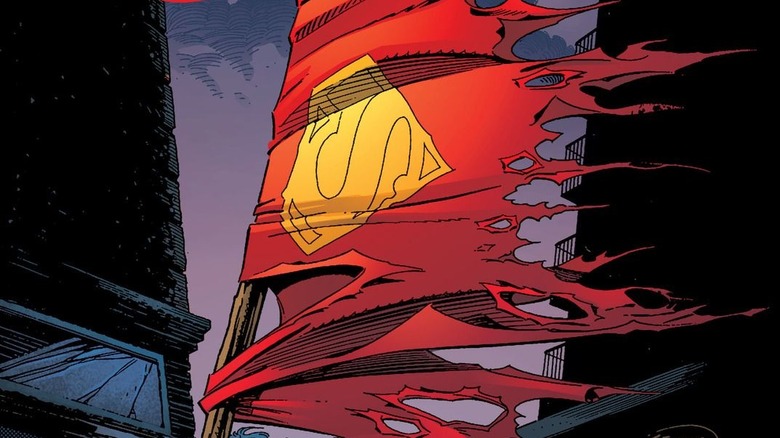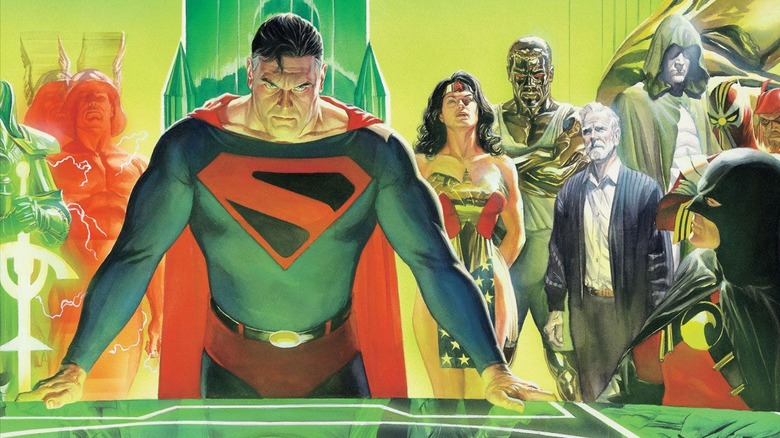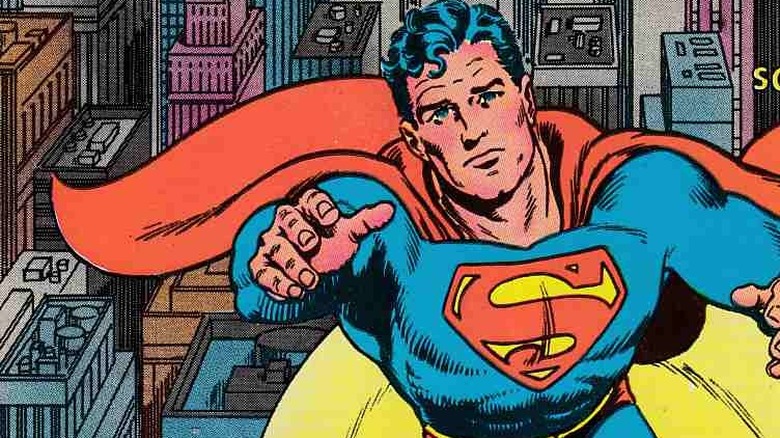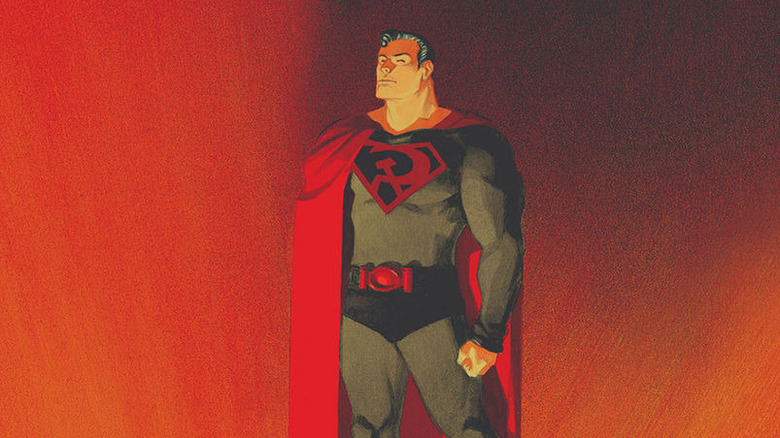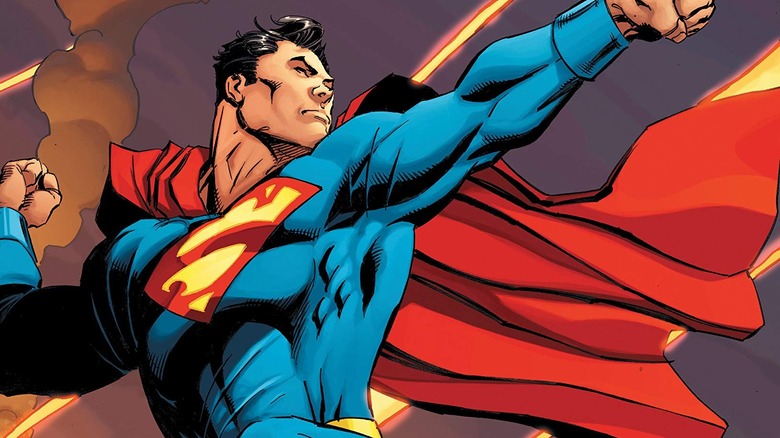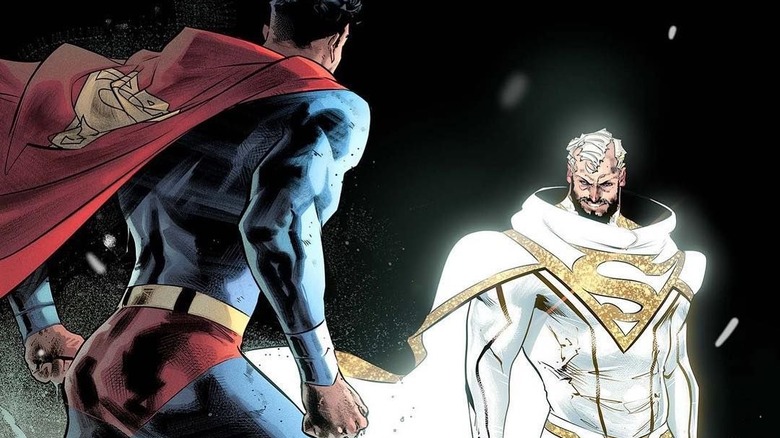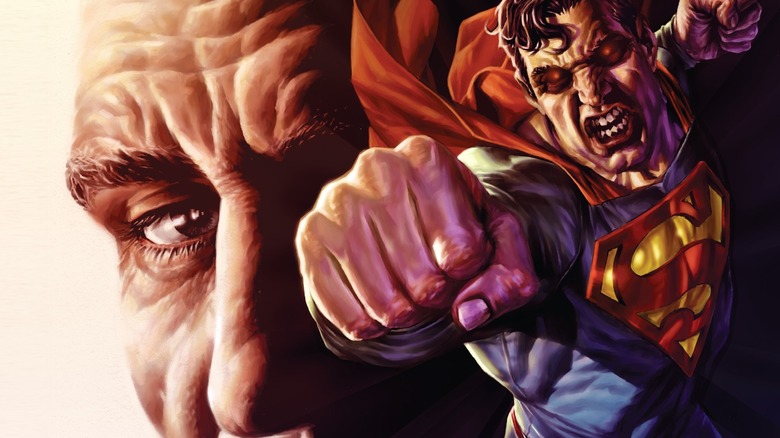The 15 Best Superman Comics You Need To Read
Like the utopian Federation of "Star Trek," Superman is an aspirational character. He's a fantasy that began in 1938, when two second-generation Jewish immigrants, Jerry Siegel and Joe Shuster, debuted Superman in the pages of "Action Comics" #1. Audiences quickly latched on to the hero, who despite all of his fantastic powers was still kind, understanding, and heroic. Sure, the myth of Superman is a dream — but fiction should sometimes dream a little.
Despite starring in numerous movies and TV shows, including at least one legitimate classic, some people still don't "get" Superman. Some argue that his god-like powers make him hard to root for and difficult to relate to. Others say that his altruism makes him boring. Superman's best stories, however, prove that those arguments couldn't be more wrong. Here are 15 comics that best represent who Superman is and all that the Man of Steel can be.
All-Star Superman
Like many Golden Age comics, early Superman stories are all over the place. His original comic focused on street-level crime, with Superman foiling corrupt politicians, mafiosos, and Nazi soldiers. About 100 issues in, Silver Age Superman becomes a hero of the fantastic, fighting multi-dimensional imps, aliens, demi-gods, and folks from the future.
"All-Star Superman" is a standalone series from Grant Morrison and Frank Quietly that serves as a 12-issue love letter to everything Superman had been since his debut issue. After being exposed to a new type of radiation, Superman is told that he only has a year to live. He ponders his place in the world and undertakes a series of wild adventures in order to wrap up his time on Earth.
The entire series honors Superman's past and his long history, but packages it in a way that's accessible to both die-hard fans and new readers. It's a Superman who not only bench-presses dwarf stars, but also takes the time to let an average person know that they are loved. If you want to know who Superman is, "All-Star Superman" is the place you need to start.
Action Comics: The New 52
After penning "All-Star Superman," DC Comics gave Grant Morrison the chance to reinvent Superman for the 21st century. Under the banner of The New 52, DC wiped away its long-standing continuity to tell new stories that paid homage to the best parts of the publisher's past.
In "Action Comics," Grant Morrison got to reboot Superman from scratch, reinventing the hero as a more brash, blue-collar hero, similar to his Golden Age incarnation. This is a Superman who fights to make the status quo better for the common man, as opposed to fighting to just keep it around.
The series also covers the exploits of a Superman with a rougher aesthetic. Gone were the circus strongman tights, replaced with a t-shirt, cape, a pair of jeans, and some work boots. He's a Superman who was a Man of the People before he was the Man of Steel. Morrison wrote 18 issues of this run before passing the torch to writer Andy Diggle, but Morrison's story is mostly self-contained — and it's an intense ride.
Superman: Secret Identity
What would you do with the powers of Superman? If you could fly, crush steel in your hands, and project heat from your eyes, how would you react to today's world? That's the question at the heart of "Superman: Secret Identity."
A young man named Clark Kent lives in Kansas — our Kansas, in a world where Superman is nothing more than a comic book character. Throughout his life, Clark was teased about his name, and couldn't stop people from comparing him to the hero from the comics and movies. And then, one day, Clark wakes up with the ability to fly. His exploits begin small, hitting back at high-school bullies, before progressing onto further heroism.
This Clark is not the Clark Kent of the comics. He makes mistakes. He gets things wrong. He ages and weakens as the story continues, with the book telling the story of his entire life as Superman. "Secret Identity" looks at what Superman means, and asks if a real person could ever live up to that seemingly impossible ideal.
Superman for All Seasons
Before he was the steward of the now-defunct Marvel Television, Jeph Loeb wrote some damned good comics. His best-known work is "Batman: The Long Halloween," a mini-series that pitted Batman against the monthly serial killer, Holiday. Drawn by Tim Sale, it's the story of one year in Batman's life.
"Superman for All Seasons" is a spiritual successor to that series, carrying forward the time-focused structure of the previous book. This four-issue limited series follows Superman across spring, summer, fall, and winter, presenting the audience with small vignettes taken from the Man of Steel's life, narrated by those around him: Jonathan Kent, Lois Lane, Lex Luthor, and Lana Lang. It's a coming-of-age tale, with Superman coming to terms with the dual identity he's created.
Tim Sale collaborated with Loeb once again on "Superman for All Seasons," which serves as a look at Superman through the lens of Americana. The art is inspired by the work of Norman Rockwell, and the book as a whole is about an American icon being seen through the eyes of others.
What's So Funny About Truth, Justice & the American Way?
One of Superman's classic hallmarks is the phrase, "A never-ending battle for truth, justice, and the American way." The catchphrase evolved over time, starting as "truth and justice" in the groundbreaking Fleischer Studios cartoons of the '40s, adding "the American way" during World War II, and even becoming "truth, tolerance, and justice" in the Superman radio serial. However, it was the '50s "Adventures of Superman" television series that really codified the phrase in pop culture.
"What's So Funny About Truth, Justice & the American Way?" was written by Joe Kelly and published in "Action Comics" #775, and grapples with a common complaint about Superman: He's hokey, goofy, and outdated. What use do we have for a hero who doesn't kill? This was an especially relevant question in 2001, when the hottest thing in comics was the Authority, a Justice League-style super-team that did whatever it took to get the job done, even if it was very, very violent.
In this story, Superman goes up against a hard-edged, Authority-inspired team called the Elite. Led by the psychic Manchester Black, the Elite executes criminals and don't care about collateral damage. This new group of "heroes" challenges the old-fashioned way Superman operates. It's a story about why, despite all his power, Superman doesn't cross the line — and shows why the world might still need heroes like him.
Superman Smashes the Klan
Superman's catchphrase came from the old radio serial, as did this inspiration for this mini-series. Back in 1946, the "Adventures of Superman" radio show ran a 16-part storyline called "Clan of the Fiery Cross." In that story, Superman fought the Ku Klux Klan. The radio serial, one of the most popular of its day, was credited with causing a sharp drop in real-life KKK membership, from which the Klan never fully recovered.
"Superman Smashes the Klan" is a retelling of that old storyline. Two Chinese-American kids, Roberta and Tommy Lee, move to Metropolis with their family. They're hoping to meet Superman, but find out that the big city isn't as kind as they thought. The Lee family attempts to assimilate by changing their names, participating in "American" activities, and distancing themselves from other minorities. Sadly, none of that keeps them from being targeted by the local chapter of the KKK.
Naturally, Superman comes to the rescue, but while the story is about punching Klansmen, it's also about finding out and celebrating who you actually are. The series is written by Chinese-American author Gene Luen Yang, and backed up by excellent art from the Japanese duo Guruhiru.
For the Man Who Has Everything
Back before he swore off corporate comics entirely, Alan Moore did some excellent work for DC. Prior to "Watchmen," the British author penned two excellent Superman stories. "For The Man Who Has Everything," published in "Superman" Annual #11, is even drawn by Moore's "Watchmen" collaborator, Dave Gibbons. In fact, this story was written and drawn before "Watchmen" had received a greenlight.
In the story, Batman, Robin, and Wonder Woman visit Superman's Fortress of Solitude on his birthday. There, they find that the alien dictator Mongul has trapped Superman in a dream via the parasitic Black Mercy plant. The plant is consuming Supes while creating a fantasy in which his deepest desire comes true: a world where Krypton never exploded. Unfortunately, Kal-El of Krypton's life isn't all roses. His mother is dead, and his father has been disgraced after prophesying an apocalypse that never came to be.
"For The Man Who Has Everything" is about everything that Kal-El lost to be Earth's Superman. It's such a classic that it's been remade on television twice: once for "Justice League Unlimited," which ended up being one of the very best episodes of an excellent show, and again for the CW's "Supergirl."
Superman: Birthright
There have been many retellings of Superman's origins over the years. One of the most well-known is "The Man of Steel," a 1986 limited series written and drawn by John Byrne. "The Man of Steel" took everything from the original "Action Comics" and "Superman" books, as well as the radio serial and the television series, and streamlined it into a single, coherent origin that served as the foundation of every Superman comic published for the next two decades
Despite its place in Superman's history, "The Man of Steel" is not my favorite Superman origin story. Instead, that honor goes to "Superman: Birthright" from Mark Waid and Leinil Francis Yu. The "Birthright" version of Clark Kent hews closer to an average person, and shows him balancing work with his heroism. Despite his powers, Clark is not immune to getting chewed out by his boss, and lives a difficult life in general.
Waid also gave Superman the ability to see the aura around all living things, explaining his empathic nature, and brought together much Superman's history to craft a fantastic starting place for anyone who wants to explore Superman's origins. After years of reboots, there's no standalone canon origin story for Superman in the comics, but "Superman: Birthright" is still an excellent go-to in my opinion.
The Death and Return of Superman
In the early '90's, sales of the Superman books were flagging compared to those of popular anti-heroes like Wolverine and Spawn. In order to show what the world would be like without a hero like Superman, the collective Superman writers decided it was time to kill him.
Superman met his end in "Superman" #75, fighting against the Image Comics-inspired villain Doomsday. Following the "Funeral for a Friend" arc, the editorial team introduced four wildly-different heroes to take up the Superman mantle. Each hero was meant to represent an aspect of the Superman mythos: The harsh Eradicator was the Last Son of Krypton, the semi-human Cyborg Superman was the Man of Tomorrow, Superboy revitalized the Silver Age favorite, and the blue-collar Steel was a literal Man of Steel.
All four were characters contrasted with Superman's style of heroism, and the overall storyline is about why the world needs Superman in the first place. "The Death of Superman" was part marketing gimmick, but also an exploration of what the DC Universe is like without its greatest hero.
Kingdom Come
"Kingdom Come" is about a world without Superman, and heroes that have come up in his absence. Following the death of Lois Lane, Superman goes into exile. In the decade that follows, a new generation of DC characters rises, while the classic heroes forget who they once were. Amid this backdrop, Pastor Norman McKay finds himself brought into contact with the Spectre, the agent of God's wrath. While attached to the mythical being, McKay bears witness to the horror of the DC Universe, and the war that starts with Superman's return.
Like "What's So Funny About Truth, Justice & the American Way?" the clash between Superman's peers and the younger heroes, led by the antihero Magog, offers a contrast between DC's classic heroes and the grim and gritty characters that were so popular in the '90s. "Kingdom Come" is also beautifully painted by Alex Ross, who adds a realistic edge to this far-out story.
Whatever Happened to the Man of Tomorrow?
Before John Byrne rebooted Superman's continuity, DC Comics decided it was time to say goodbye to the classic version of the character. So, the publisher assembled an all-star team for Superman's "final" two issues, "Superman" #423 and "Action Comics" #583. Alan Moore wrote the story alongside veteran Superman editor Julius Schwartz, while the legendary Curt Swan handled the art.
The story, which is framed as an interview with an elderly Lois Lane, features a cavalcade of Superman's best villains doing their worst. Bizarro destroys Metropolis. The Toyman and Prankster expose his secret identity. Luthor and Brainiac merge into a deadly new foe. Ultimately, Superman makes the ultimate sacrifice: He gives up his powers to stop the bad guys and disappears.
Or does he? "Whatever Happened to the Man of Tomorrow" is a very dark story, but also ends up being one of Alan Moore's best DC comics. The final moments of some of Superman's villains are some of the most poignant moments in their histories, especially Bizarro's.
Superman: Red Son
A number of Elseworld stories boil down to, "What if Superman's capsule had landed elsewhere?" What if Superman's capsule landed in Gotham City? What if he landed during the Civil War? Or on Apokolips? In "Superman: Red Son," written by Mark Millar, the main premise is. "What if Superman had been raised in the Soviet Union?" In this new reality, familiar figures are cast in a new light. James Olsen is a CIA agent, not Superman's best friend. Lex Luthor is a scientist employed by S.T.A.R. Labs. Batman is a young Russian orphan who hates the government.
It should be a darker story, and there are hints of tragedy, like this world's version of Wonder Woman sacrificing herself for Superman. However, the general humanity of Superman shines through regardless. Whether he's from America's heartland or the cold environments of the Soviet Union, he's still Superman, not Ubermersch, Overman, Ultraman, or any of his other, darker counterparts.
Superman: Up in the Sky
How much is a single life worth? That's a question that exposes the strengths of Superman as a character: a hero who can do anything must make some very difficult choices.
"Superman: Up in the Sky" was originally a digital-only release, comprised of a series of 10-page stories by Tom King and Andy Kubert. A young girl has been kidnapped from Earth by aliens. Will Superman search the cosmos — and beyond — to bring her home? You're damned right he will. But while he does, who's watching Metropolis?
Similar to "All-Star Superman," "Superman: Up in the Sky" is a series of stand-alone adventures wrapped up in an overarching storyline. Watch Superman box aliens with no powers. See him fight alongside Sgt. Rock in World War I. Cheer as he argues with himself about his place in the world. All this, for one scared child who believes in Superman. Superman's choices, not his powers, make him the the hero he is, and King's story illustrates that wonderfully.
Justice League: The Sixth Dimension
In this story, from Scott Snyder and Jorge Jimenez' recent run on "Justice League," the League is trying to prevent Lex Luthor and his Legion of Doom from unlocking the cage that holds Perpetua, the mother of the forces of the universe. They've been handed a map to the Sixth Dimension, which might contain the answers they seek. However, the League ends up on a future version of Earth instead, where they're confronted by older versions of themselves. Here, Earth is at finally peace, and the Justice League won long ago.
Or did they? And where is Superman, who should've arrived in the future with his friends? Well, Superman finds himself alone in a different universe, trapped on a lone planet with no light, filled with the corpses of hundreds of Supermen. All that Superman needs to do is leave this mass grave and go up, up, and ... well, you know.
That's easier said than done, though. Superman's powers may be fading, but that doesn't stop him from trying again and again to do the right thing. Superman is really about never giving up, and this story hammers that idea home.
Lex Luthor: Man of Steel
If a hero is ultimately defined by his villains, then the Man of Tomorrow is defined by the Man of Today. "Lex Luthor: Man of Steel," by Brian Azzarello and Lee Bermejo, is all about what makes Superman's arch-nemesis, Lex Luthor, tick. At his core, Lex Luthor is a narcissist who believes that if Superman never came to Metropolis, then he would be hailed as the greatest hero. Maybe the true Man of Steel is the one that has forged his body and mind to the task, and not the alien born with special abilities?
"Lex Luthor: Man of Steel" is ultimately about connection. For all his intelligence, his strength, and his cunning, Lex can't connect with the common man the way that Superman can. He's motivated by fear. He doesn't see hope in Superman. He sees the end of humanity. This series dives into all Luthor's psychology and asks if maybe, just maybe, despite all his faults, Lex Luthor is actually right.
